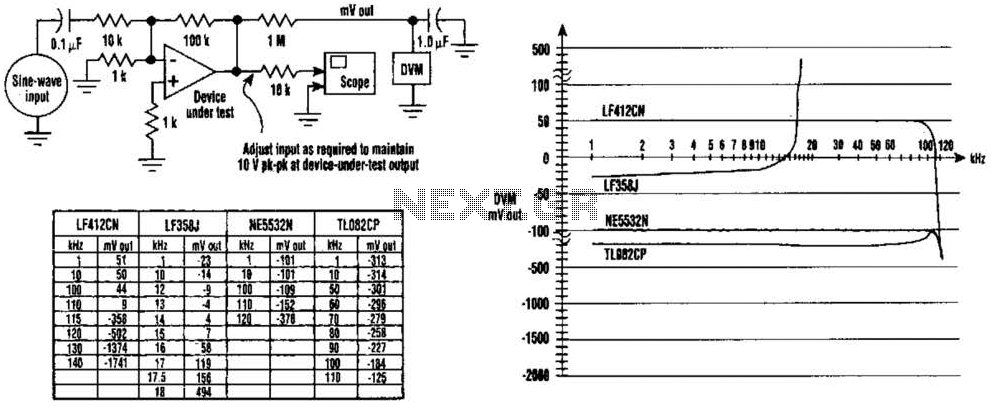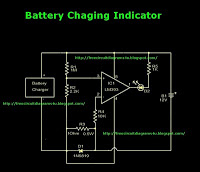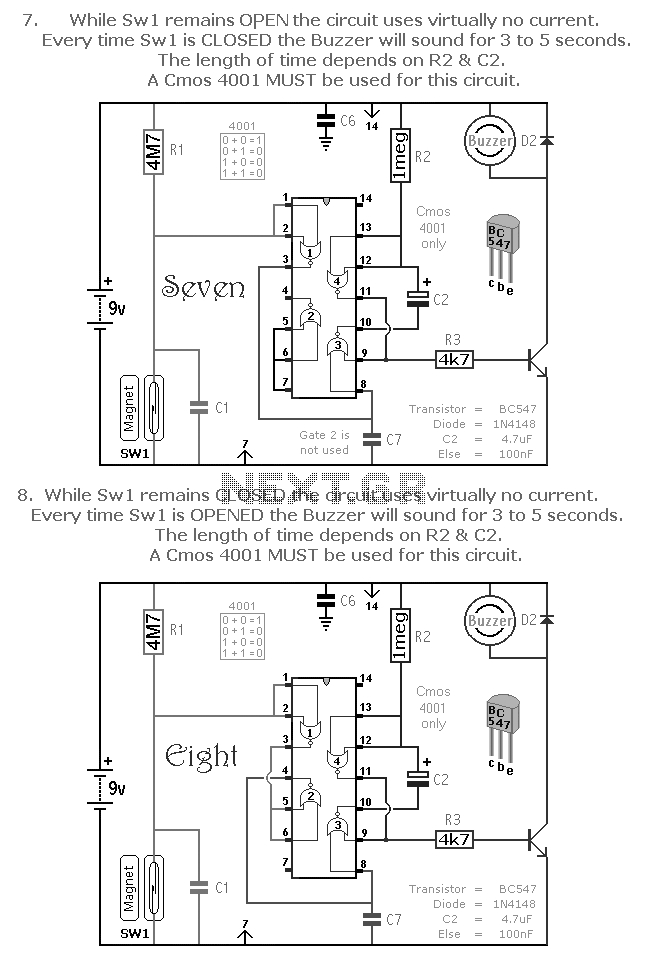
Sine Wave Generator Circuit

In this circuit, a square wave is filtered using a high-order low-pass filter designed to eliminate most harmonics of the waveform at a -3 dB frequency. Consequently, the output of the filter is a fundamental sine wave. This technique employs a switched-capacitor filter (MAX292) to generate the sine wave, as illustrated in the accompanying figure. The circuit features a wide frequency range from 0.1 Hz to 25 kHz, exhibits low distortion, and maintains a constant output amplitude across the entire frequency spectrum.
The circuit utilizes a high-order low-pass filter to effectively attenuate the higher frequency components of the square wave, which are primarily the harmonics. The -3 dB cutoff frequency is a critical parameter, determining the bandwidth of the filter and ensuring that the fundamental frequency is preserved while higher harmonics are significantly reduced. The MAX292 switched-capacitor filter is specifically chosen for its ability to achieve high precision and low distortion in signal processing applications.
The design of the circuit allows for a frequency response that remains stable over a wide range, from 0.1 Hz to 25 kHz. This capability makes it suitable for various applications that require precise sine wave generation, such as in audio signal processing, waveform generation for testing, and communication systems. The low distortion characteristic ensures that the output sine wave closely resembles an ideal waveform, which is essential for maintaining signal integrity in downstream applications.
Furthermore, the constant output amplitude throughout the frequency range is an important feature, as it ensures that the generated sine wave does not vary in amplitude with frequency changes. This stability is crucial in applications where consistent signal levels are necessary, such as in modulation schemes or when interfacing with other electronic components. Overall, this circuit design exemplifies an effective method for converting a square wave into a clean sine wave, suitable for a variety of electronic applications. In this circuit, a square wave is filtered by a high-order low-pass filter so that a -3-dB frequency will eliminate most harmonics of the waveform. As a result, the filter outputs a fundamental sine wave. This method is applied to generate a sine wave by using a switched- capacitor filter (MAX292) (see the figure).
This circuit offers wide frequency range (0.1 Hz to 25 kHz), low distortion, and constant output amplitude throughout the whole frequency range.
The circuit utilizes a high-order low-pass filter to effectively attenuate the higher frequency components of the square wave, which are primarily the harmonics. The -3 dB cutoff frequency is a critical parameter, determining the bandwidth of the filter and ensuring that the fundamental frequency is preserved while higher harmonics are significantly reduced. The MAX292 switched-capacitor filter is specifically chosen for its ability to achieve high precision and low distortion in signal processing applications.
The design of the circuit allows for a frequency response that remains stable over a wide range, from 0.1 Hz to 25 kHz. This capability makes it suitable for various applications that require precise sine wave generation, such as in audio signal processing, waveform generation for testing, and communication systems. The low distortion characteristic ensures that the output sine wave closely resembles an ideal waveform, which is essential for maintaining signal integrity in downstream applications.
Furthermore, the constant output amplitude throughout the frequency range is an important feature, as it ensures that the generated sine wave does not vary in amplitude with frequency changes. This stability is crucial in applications where consistent signal levels are necessary, such as in modulation schemes or when interfacing with other electronic components. Overall, this circuit design exemplifies an effective method for converting a square wave into a clean sine wave, suitable for a variety of electronic applications. In this circuit, a square wave is filtered by a high-order low-pass filter so that a -3-dB frequency will eliminate most harmonics of the waveform. As a result, the filter outputs a fundamental sine wave. This method is applied to generate a sine wave by using a switched- capacitor filter (MAX292) (see the figure).
This circuit offers wide frequency range (0.1 Hz to 25 kHz), low distortion, and constant output amplitude throughout the whole frequency range.





